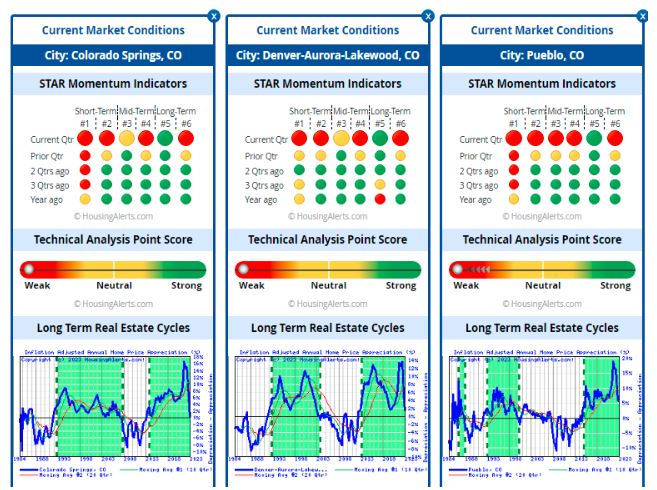Wow! Three months ago, the market was weakening for Colorado Springs, Pueblo, and Denver. In December 2022, the Six Trigger Alert Reports (STAR) Momentum indicators for Pueblo and Colorado Springs were strong both short-term and long-term. Denver looked like it had some concerns in the long term, but otherwise appeared strong in the long term. It still does, but there are immediate concerns. The Technical Analysis Point Score (TAPS) graphs now suggest that all these areas are solidly weak or verging toward weak.
State of Colorado
From a wealth accumulation point of view, Denver, the largest market in Colorado, reflects the state of Colorado. All three graphs indicate that these areas in Colorado are still appreciating markets but appreciation has dropped significantly to 2-3%, less than half of what the appreciation was in mid-December.
Notice that the long-term and short-term moving averages crossed over in the last year and continue to diverge.
We’re seeing a continuing dip in appreciation which we have been anticipating since the two moving averages crossed last year. If it continues in this manner, expect housing prices to drop sharply and monthly inventory to grow in all three markets. At this rate, within 6 months it will be a depreciating market.
